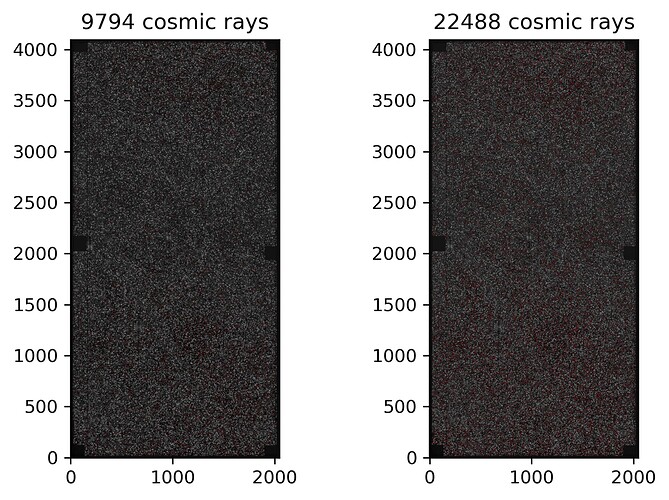I’m running the characterizeImage task on data from DECam using version w.2022.06 of the pipelines. The images are of very dense fields in the galactic plane. I am finding that for some of the visits and detectors there are a very large number of cosmic rays being detected and repaired. Typically, this causes the pipeline to fail as the number of cosmic ray pixels exceeds the obs_decam default of 100,000:
Execution of task 'characterizeImage' on quantum {instrument: 'DECam', detector: 4, visit: 975920, ...} failed. Exception LengthError:
File "src/CR.cc", line 724, in std::vector<std::shared_ptr<lsst::afw::detection::Footprint> > lsst::meas::algorithms::findCosmicRays(MaskedImageT&, const lsst::afw::detection::Psf&, double, const lsst::daf::base::PropertySet&, bool) [with MaskedImageT = lsst::afw::image::MaskedImage<float>]
Too many CR pixels (max 100000) {0}
lsst::pex::exceptions::LengthError: 'Too many CR pixels (max 100000)'
I’ve tried increasing this number to get the processing to succeed, but find that I have to increase it so far as to make some of the data unusable or suspect: for example, 1,000,000 is ~12% of the detector.
I’m finding that this effect is variable with visit and detector number, which makes me think it is due to an observational effect. To explore this effect, I’ve plotted the same detector from 2 visits of the same field with cosmic ray masks overplotted:
Sorry if they are not very visible with color, size, and compression, here is a full resolution image: https://epyc.astro.washington.edu/~stevengs/cr.png
What I find is that the cosmic rays seem to trace the background i.e. where the density of sources drops. I also find that the number of cosmic rays detected (9794 and 22488) are much, much higher than what I’d expect (no surprise given the error). For a less dense field and similar exposure time, the CR repair process finds 20-120 cosmic rays.
This effect is quite common, causing processing failures in ~18% of the detectors from visits to the dense field. So my solution is to turn off cosmic ray detection and repair when processing dense fields. But I am posting here in case anyone has insight about what causes this, potential fixes, and expected behavior when processing dense fields.
